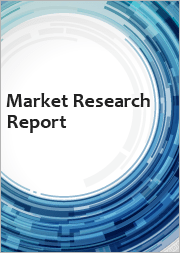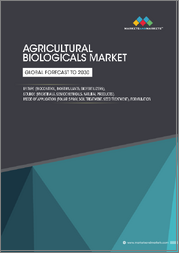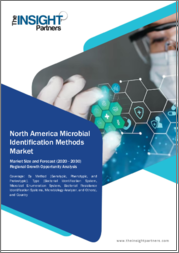
|
시장보고서
상품코드
1481977
북미의 미생물 동정법 시장 예측(-2030년) : 지역 분석 - 방법, 유형별North America Microbial Identification Methods Market Forecast to 2030 - Regional Analysis - By Method and Type |
||||||
북미의 미생물 동정법 시장은 2022년에 21억 1,183만 달러로 평가되며, 2030년에는 33억 1,978만 달러에 달할 것으로 예측되며, 2022-2030년의 CAGR은 5.8%로 성장할 것으로 예측되고 있습니다.
미생물 동정 절차를 요구하는 식품 안전에 대한 관심의 증가가 북미의 미생물 동정법 시장을 지원
식품매개감염병(FBD)은 공중위생 및 경제 문제의 확산과 확산입니다. 식품 매개 감염의 유행은 최근 식품 생산 및 가공 방법의 변화와 소비자의 식습관 변화의 영향을 받고 있습니다. 감염시 알려진 병원체 간의 상호 작용은 우려되는 문제 중 하나이며, 최근 수년간 새로운 도전과제가 등장했습니다. 화학적 방부제와 콜드체인의 도입과 미생물에 대한 이해도가 높아졌음에도 불구하고, 식중독은 선진국과 개발도상국 모두에게 심각한 공중보건 문제입니다. 식품안전클러스터는 매년 42만 명이 사망하고 6억 명 이상(전 세계 인구 10명 중 1명)이 오염된 식품을 섭취한 후 질병에 걸리며, 2022년 6월까지 3,300만 DALY가 손실될 것으로 추정하고 있습니다.
미국 질병예방통제센터(CDC)의 2019년 자료에 따르면 미국에서는 매년 6명 중 1명이 식중독에 걸립니다. 살모넬라, 대장균, 캄필로박터, 리스테리아 등의 박테리아가 많은 식중독의 원인입니다. 식중독은 국내에서 매년 약 10만 명의 입원 환자와 3,000명의 사망자를 발생시킵니다. 또한 매년 400만 명의 캐나다인, 즉 인구 8명 중 1명이 오염된 음식으로 인해 병에 걸립니다. 연간 11,500명이 입원하고 240명이 사망하는 것으로 추정됩니다. 이 수치에는 30가지 식중독 병원균과 급성 위장염의 미확인된 원인이 모두 포함됩니다. 기존의 접근법은 다양한 비선택적 및 선택적 농축 기술을 사용하여 박테리아를 배양하고 생화학적 확인 등을 수행하는 것이었습니다. 식품, 특히 생고기, 생선, 유제품, 채소 등 유통기한이 짧은 식품을 검사할 경우, 검출에 드는 시간은 큰 제약이 될 수 있습니다. 일부 새로운 검출 방법은 매트릭스 지원 레이저 탈이온화 이온화 비행시간법이나 초분광 영상과 같은 분광학적 접근법을 사용하고 있습니다. 이처럼 식중독 사례 증가는 미생물 동정법 시장을 주도하고 있습니다.
북미 미생물 동정법 시장 개요
북미 미생물 동정법 시장은 지난 수년간 헬스케어, 제약, 식품 및 음료, 환경 모니터링 등 다양한 산업에서 정확하고 신속한 미생물 식별에 대한 수요가 급증하면서 큰 폭으로 성장하고 있습니다. 이러한 성장의 배경에는 전염병 발생률 증가, 식품 및 의약품 생산에 대한 엄격한 품질 관리 조치의 필요성, 공중 보건을 유지하는 데 있으며, 미생물 모니터링의 중요성에 대한 인식 증가 등 여러 가지 요인이 있습니다.과 관련된 E. coli 감염 발생으로 20명의 환자가 발생했고 5명이 입원했습니다.
또한 기술 발전, 혁신적인 미생물 식별 방법의 도입 및 중요한 기업의 존재는 향후 수년간 시장 확장을 지원할 것으로 예상됩니다. 예를 들어 미생물학 박테리아 식별 검사 준비를 자동화하는 것을 목표로 하는 BD Kiestra IdentifA 시스템은 2022년 1월 FDA로부터 510(k) 승인을 받았습니다. 또한 미국 브루커 코퍼레이션(Bruker Corporation)은 2021년 1월 MALDI Biotyper CA 시스템을 사용하여 양성 혈액 배양에서 425개 이상의 박테리아를 신속하게 식별하는 MBT Sepsityper Kit IVD를 발표했습니다. 또한 자동화 및 인공지능(AI)은 식별 프로세스를 간소화하고 인적 오류를 줄이며 전반적인 효율성을 향상시키는 데 있으며, 매우 중요합니다. 제약 및 생명공학 부문은 북미 미생물 동정 시장의 성장에 크게 기여하고 있습니다. 의약품 개발, 품질 관리 및 규제 준수를 위해 미생물을 정확하게 식별해야 하기 때문에 고급 식별 방법에 대한 수요가 증가하고 있습니다. 다양한 최종사용자의 정확하고 신속한 미생물 식별에 대한 수요 증가, 감염성 질환 발생률 증가, 식품 및 의약품 제조에서 엄격한 품질 관리 조치의 필요성, 공중 보건을 유지하는 데 있으며, 미생물 모니터링의 중요성에 대한 인식의 향상은 북미 시장을 촉진하는 몇 가지 요인입니다.
북미 미생물 동정법 시장 매출 및 2030년까지의 예측(금액)
북미 미생물 동정법 시장 세분화
북미 미생물 동정법 시장은 방법, 유형, 국가별로 세분화되어 있습니다.
방법론에 따라 북미 미생물 동정법 시장은 유전자형, 표현형, 프로테오유형으로 구분되며, 2022년에는 표현형 부문이 가장 큰 점유율을 차지할 것으로 예상됩니다. 유전자형 부문은 다시 기기, 키트, 시약으로 세분화됩니다. 표현형 부문은 기기, 키트, 시약으로 세분화됩니다. 프로테오유형 부문은 기기, 키트, 시약으로 세분화됩니다.
유형별로 북미 미생물 동정법 시장은 세균 동정 시스템, 미생물 열거 시스템, 내성균 동정 시스템, 미생물학 분석기, 기타로 분류됩니다. 박테리아 식별 시스템 부문이 2022년 가장 큰 점유율을 차지했습니다.
국가별로는 북미 미생물 동정법 시장은 미국과 캐나다로 양분됩니다. 미국은 2022년 북미 미생물 동정법 시장을 독점했습니다.
Accelerate Diagnostics Inc, Avantor Inc, Becton Dickinson and Co, bioMerieux SA, Bruker Corp, Danaher Corp, Merck KGaA, Molzym GmbH &Co KG, Shimadzu Corp, Thermo Fisher Scientific Inc는 북미 미생물 동정법 시장에서 사업을 운영하고 있는 주요 기업입니다.
목차
제1장 서론
제2장 주요 요약
- 주요 인사이트
제3장 조사 방법
- 조사 범위
- 2차 조사
- 1차 조사
제4장 북미의 미생물 동정법 시장 구도
- 북미의 PEST 분석
제5장 북미의 미생물 동정법 시장 - 주요 산업 역학
- 시장 촉진요인
- 미생물 동정법을 요구하는 식품 안전에 대한 관심의 증가
- 다양한 최종사용자에서 미생물 동정법에 대한 수요의 증가
- 시장 억제요인
- 자동 미생물 동정 시스템의 고비용
- 복잡한 규제 구조에 의한 신규 미생물 진단 검사의 승인 프로세스의 지연
- 시장 기회
- 미생물 동정을 촉진하기 위한 정부의 구상과 자금 원조
- 향후 동향
- 미생물 동정 기술의 진보
- 영향 분석
제6장 미생물 동정법 시장 : 북미 시장 분석
- 북미의 미생물 동정법 시장 매출, 2020-2030년
제7장 북미의 미생물 동정법 시장 - 매출과 2030년까지의 예측 : 미생물 동정법별
- 시장 매출 점유율, 2022년 및 2030년
- 유전자형
- 표현형
- Proteotypic
제8장 북미의 미생물 동정법 시장 - 매출과 2030년까지의 예측 : 유형별
- 시장 매출 점유율, 2022년 및 2030년
- 세균 식별 시스템
- 미생물 동정 시스템
- 내성균 식별 시스템
- 미생물 분석기
- 기타
제9장 북미의 미생물 동정법 시장 : 국가별 분석
- 북미
- 미국
- 캐나다
제10장 북미의 미생물 동정법 시장의 업계 상황
- 북미의 미생물 동정법 시장의 성장 전략
- 무기적 성장 전략
- 유기적 성장 전략
제11장 기업 개요
- Avantor Inc
- Becton Dickinson and Co
- Danaher Corp
- bioMerieux SA
- Merck KGaA
- Thermo Fisher Scientific Inc
- Bruker Corp
- Shimadzu Corp
- Accelerate Diagnostics Inc
- Molzym GmbH & Co KG
- Biolog Inc
제12장 부록
KSA 24.05.31The North America microbial identification methods market was valued at US$ 2,111.83 million in 2022 and is expected to reach US$ 3,319.78 million by 2030; it is estimated to grow at a CAGR of 5.8% from 2022 to 2030.
Increasing Food Safety Concerns Demanding for Microbial Identification Procedure Fuel the North America Microbial Identification Methods Market
Foodborne diseases (FBD) are a prevalent and expanding public health and economic problem. The prevalence of foodborne infections is influenced by recent changes in food production and processing methods and consumers' ever-evolving eating patterns. The interaction between known pathogens during infection is one of the concerns, and new difficulties have emerged in recent years. Despite the rising adoption of chemical preservatives, cold chains, and a greater understanding of microbes, foodborne illnesses are a significant public health issue for both industrialized and developing nations. The Food Security Cluster estimates that each year, ~420,000 people die, and over 600 million people-nearly one in ten people worldwide-get sick after consuming contaminated food, resulting in a loss of 33 million DALYs in June 2022.
As per the Centers for Disease Control and Prevention (CDC) 2019, every year, about 1 in 6 people in the US have a foodborne disease. Bacteria, such as Salmonella, E. Coli, Campylobacter, and Listeria, are the cause of many foodborne infections. Foodborne infections cause about 100,000 hospital admissions and 3,000 fatalities annually in the country. Additionally, every year, 4 million Canadians, or 1 in 8 of the population, become ill from contaminated food. An estimated 11,500 hospital admissions and 240 fatalities are attributed to foodborne diseases annually. Both estimates for 30 foodborne pathogens and unidentified causes of acute gastrointestinal sickness are included in the numbers. The conventional approach is cultivating bacteria using a variety of nonselective and selective enrichment techniques, followed, among other things, by biochemical confirmation. The time-to-detection is a significant limitation when testing foods, especially those with short shelf lives like fresh meat, fish, dairy products, and vegetables. Several newer detection methods use spectroscopic approaches, such as matrix-assisted laser desorption ionization-time of flight and hyperspectral imaging protocols. Thus, the increase in cases of foodborne diseases is driving the microbial identification methods market.
North America Microbial Identification Methods Market Overview
The North America microbial identification method market has experienced substantial growth in the past few years due to an upsurge in demand for accurate and rapid microbial identification across various industries such as healthcare, pharmaceuticals, food & beverages, and environmental monitoring. The growth is attributed to several factors, including the rising incidence of infectious diseases, the need for stringent quality control measures in food and pharmaceutical production, and the growing awareness of the importance of microbial monitoring in maintaining public health. The E. coli outbreak connected to frozen falafel resulted in 20 instances of sickness and five hospitalizations, according to a November 2022 update from the CDC.
Furthermore, advancements in technology, the introduction of innovative microbial identification methods, and the existence of significant players are anticipated to support the market expansion in the coming years. For instance, the BD Kiestra IdentifA system, intended to automate the preparation of microbiology bacterial identification testing, received 510(k) clearance by the FDA in January 2022. In addition, Bruker Corporation, a US-based organization, introduced the MBT Sepsityper Kit IVD in January 2021 to quickly identify more than 425 bacteria from positive blood cultures using the MALDI Biotyper CA System. Additionally, automation and artificial intelligence (AI) are pivotal in streamlining the identification process, reducing human error, and improving overall efficiency. The pharmaceutical and biotechnology sectors are major contributors to the growth of the microbial identification market in North America. The need for precise identification of microorganisms for drug development, quality control, and regulatory compliance has led to a high demand for advanced identification methods. Thus, increasing demand for accurate and rapid microbial identification across various end users, rising incidence of infectious diseases, the need for stringent quality control measures in food and pharmaceutical production, and the growing awareness of the importance of microbial monitoring in maintaining public health are a few other factors driving the market in North America.
North America Microbial Identification Methods Market Revenue and Forecast to 2030 (US$ Million)
North America Microbial Identification Methods Market Segmentation
The North America microbial identification methods market is segmented based on method, type, and country.
Based on method, the North America microbial identification methods market is segmented into genotypic, phenotypic, and proteotypic. The phenotypic segment held the largest share in 2022. The genotypic segment is further subsegmented into instruments, kits, reagents. The phenotypic segment is further subsegmented into instruments, kits, reagents. The proteotypic segment is further subsegmented into instruments, kits, reagents.
By type, the North America microbial identification methods market is segmented into bacterial identification system, microbial enumeration system, bacterial resistance identification systems, microbiology analyzer, and others. The bacterial identification system segment held the largest share in 2022.
Based on country, the North America microbial identification methods market is bifurcated into the US and Canada. The US dominated the North America microbial identification methods market in 2022.
Accelerate Diagnostics Inc, Avantor Inc, Becton Dickinson and Co, bioMerieux SA, Bruker Corp, Danaher Corp, Merck KGaA, Molzym GmbH & Co KG, Shimadzu Corp, Thermo Fisher Scientific Inc are some of the leading companies operating in the North America microbial identification methods market.
Table Of Contents
1. Introduction
- 1.1 The Insight Partners Research Report Guidance
- 1.2 Market Segmentation
2. Executive Summary
- 2.1 Key Insights
3. Research Methodology
- 3.1 Coverage
- 3.2 Secondary Research
- 3.3 Primary Research
4. North America Microbial Identification Methods Market Landscape
- 4.1 Overview
- 4.2 North America PEST Analysis
5. North America Microbial Identification Methods Market - Key Industry Dynamics
- 5.1 Market Drivers
- 5.1.1 Increasing Food Safety Concerns Demanding for Microbial Identification Procedure
- 5.1.2 Rising Demand for Microbial Identification Methods Across Various End Users
- 5.2 Market Restraints
- 5.2.1 High Cost of Automated Microbial Identification Systems
- 5.2.2 Delay in Approval Process of New Microbial Diagnostic Test Due to Complex Regulatory Framework
- 5.3 Market Opportunities
- 5.3.1 Government Initiatives and Funding to Promote Microbial Identification
- 5.4 Future Trends
- 5.4.1 Advancements in Microbial Identification Techniques
- 5.5 Impact Analysis:
6. Microbial Identification Methods Market - North America Market Analysis
- 6.1 North America Microbial Identification Methods Market Revenue (US$ Mn), 2020 - 2030
7. North America Microbial Identification Methods Market - Revenue and Forecast to 2030 - by Method
- 7.1 Overview
- 7.2 North America Microbial Identification Methods Market Revenue Share, by Method 2022 & 2030 (%)
- 7.3 Genotypic
- 7.3.1 Overview
- 7.3.2 Genotypic: North America Microbial Identification Methods Market - Revenue and Forecast to 2030 (US$ Million)
- 7.3.2.1 North America Microbial Identification Methods Market, by Genotypic Product, 2020-2030 (US$ Million)
- 7.3.2.2 North America Microbial Identification Methods Market, by Genotypic Microbe Type, 2020-2030 (US$ Million)
- 7.4 Phenotypic
- 7.4.1 Overview
- 7.4.2 Phenotypic: North America Microbial Identification Methods Market - Revenue and Forecast to 2030 (US$ Million)
- 7.4.2.1 North America Microbial Identification Methods Market, by Phenotypic Product, 2020-2030 (US$ Million)
- 7.4.2.2 North America Microbial Identification Methods Market, by Phenotypic Microbe Type, 2020-2030 (US$ Million)
- 7.5 Proteotypic
- 7.5.1 Overview
- 7.5.2 Proteotypic: North America Microbial Identification Methods Market - Revenue and Forecast to 2030 (US$ Million)
- 7.5.2.1 North America Microbial Identification Methods Market, by Proteotypic Product, 2020-2030 (US$ Million)
- 7.5.2.2 North America Microbial Identification Methods Market, by Proteotypic Microbe Type, 2020-2030 (US$ Million)
8. North America Microbial Identification Methods Market - Revenue and Forecast to 2030 - by Type
- 8.1 Overview
- 8.2 North America Microbial Identification Methods Market Revenue Share, by Type 2022 & 2030 (%)
- 8.3 Bacterial Identification Systems
- 8.3.1 Overview
- 8.3.2 Bacterial Identification Systems: North America Microbial Identification Methods Market - Revenue and Forecast to 2030 (US$ Million)
- 8.4 Microbial Enumeration Systems
- 8.4.1 Overview
- 8.4.2 Microbial Enumeration System: North America Microbial Identification Methods Market - Revenue and Forecast to 2030 (US$ Million)
- 8.5 Bacterial Resistance Identification Systems
- 8.5.1 Overview
- 8.5.2 Bacterial Resistance Identification Systems: North America Microbial Identification Methods Market - Revenue and Forecast to 2030 (US$ Million)
- 8.6 Microbiology Analyzers
- 8.6.1 Overview
- 8.6.2 Microbiology Analyzer: North America Microbial Identification Methods Market - Revenue and Forecast to 2030 (US$ Million)
- 8.7 Others
- 8.7.1 Overview
- 8.7.2 Others: North America Microbial Identification Methods Market - Revenue and Forecast to 2030 (US$ Million)
9. North America Microbial Identification Methods Market - Country Analysis
- 9.1 North America
- 9.1.1 North America Microbial Identification Methods Market, by Country
- 9.1.1.1 US
- 9.1.1.1.1 US: North America Microbial Identification Methods Market Revenue and Forecast to 2030 (US$ Mn)
- 9.1.1.1.2 US: North America Microbial Identification Methods Market, by Method
- 9.1.1.1.2.1 US: North America Microbial Identification Methods Market, by Genotypic Product, 2020-2030 (US$ Million)
- 9.1.1.1.2.2 US: North America Microbial Identification Methods Market, by Genotypic Microbe Type, 2020-2030 (US$ Million)
- 9.1.1.1.2.3 US: North America Microbial Identification Methods Market, by Phenotypic Product, 2020-2030 (US$ Million)
- 9.1.1.1.2.4 US: North America Microbial Identification Methods Market, by Phenotypic Microbe Type, 2020-2030 (US$ Million)
- 9.1.1.1.2.5 US: North America Microbial Identification Methods Market, by Proteotypic Product, 2020-2030 (US$ Million)
- 9.1.1.1.2.6 US: North America Microbial Identification Methods Market, by Proteotypic Microbe Type, 2020-2030 (US$ Million)
- 9.1.1.1.3 US: North America Microbial Identification Methods Market, by Type
- 9.1.1.2 Canada
- 9.1.1.2.1 Canada: North America Microbial Identification Methods Market Revenue and Forecast to 2030 (US$ Mn)
- 9.1.1.2.2 Canada: North America Microbial Identification Methods Market, by Method
- 9.1.1.2.2.1 Canada: North America Microbial Identification Methods Market, by Genotypic Product, 2020-2030 (US$ Million)
- 9.1.1.2.2.2 Canada: North America Microbial Identification Methods Market, by Genotypic Microbe Type, 2020-2030 (US$ Million)
- 9.1.1.2.2.3 Canada: North America Microbial Identification Methods Market, by Phenotypic Product, 2020-2030 (US$ Million)
- 9.1.1.2.2.4 Canada: North America Microbial Identification Methods Market, by Phenotypic Microbe Type, 2020-2030 (US$ Million)
- 9.1.1.2.2.5 Canada: North America Microbial Identification Methods Market, by Proteotypic Product, 2020-2030 (US$ Million)
- 9.1.1.2.2.6 Canada: North America Microbial Identification Methods Market, by Proteotypic Microbe Type, 2020-2030 (US$ Million)
- 9.1.1.2.3 Canada: North America Microbial Identification Methods Market, by Type
- 9.1.1.1 US
- 9.1.1 North America Microbial Identification Methods Market, by Country
10. North America Microbial Identification Methods Market Industry Landscape
- 10.1 Overview
- 10.2 Growth Strategies in the North America Microbial Identification Methods Market
- 10.3 Inorganic Growth Strategies
- 10.3.1 Overview
- 10.4 Organic Growth Strategies
- 10.4.1 Overview
11. Company Profiles
- 11.1 Avantor Inc
- 11.1.1 Key Facts
- 11.1.2 Business Description
- 11.1.3 Products and Services
- 11.1.4 Financial Overview
- 11.1.5 SWOT Analysis
- 11.1.6 Key Developments
- 11.2 Becton Dickinson and Co
- 11.2.1 Key Facts
- 11.2.2 Business Description
- 11.2.3 Products and Services
- 11.2.4 Financial Overview
- 11.2.5 SWOT Analysis
- 11.2.6 Key Developments
- 11.3 Danaher Corp
- 11.3.1 Key Facts
- 11.3.2 Business Description
- 11.3.3 Products and Services
- 11.3.4 Financial Overview
- 11.3.5 SWOT Analysis
- 11.3.6 Key Developments
- 11.4 bioMerieux SA
- 11.4.1 Key Facts
- 11.4.2 Business Description
- 11.4.3 Products and Services
- 11.4.4 Financial Overview
- 11.4.5 SWOT Analysis
- 11.4.6 Key Developments
- 11.5 Merck KGaA
- 11.5.1 Key Facts
- 11.5.2 Business Description
- 11.5.3 Products and Services
- 11.5.4 Financial Overview
- 11.5.5 SWOT Analysis
- 11.5.6 Key Developments
- 11.6 Thermo Fisher Scientific Inc
- 11.6.1 Key Facts
- 11.6.2 Business Description
- 11.6.3 Products and Services
- 11.6.4 Financial Overview
- 11.6.5 SWOT Analysis
- 11.6.6 Key Developments
- 11.7 Bruker Corp
- 11.7.1 Key Facts
- 11.7.2 Business Description
- 11.7.3 Products and Services
- 11.7.4 Financial Overview
- 11.7.5 SWOT Analysis
- 11.7.6 Key Developments
- 11.8 Shimadzu Corp
- 11.8.1 Key Facts
- 11.8.2 Business Description
- 11.8.3 Products and Services
- 11.8.4 Financial Overview
- 11.8.5 SWOT Analysis
- 11.8.6 Key Developments
- 11.9 Accelerate Diagnostics Inc
- 11.9.1 Key Facts
- 11.9.2 Business Description
- 11.9.3 Products and Services
- 11.9.4 Financial Overview
- 11.9.5 SWOT Analysis
- 11.9.6 Key Developments
- 11.10 Molzym GmbH & Co KG
- 11.10.1 Key Facts
- 11.10.2 Business Description
- 11.10.3 Products and Services
- 11.10.4 Financial Overview
- 11.10.5 SWOT Analysis
- 11.10.6 Key Developments
- 11.11 Biolog Inc
- 11.11.1 Key Facts
- 11.11.2 Business Description
- 11.11.3 Products and Services
- 11.11.4 Financial Overview
- 11.11.5 SWOT Analysis
- 11.11.6 Key Developments
12. Appendix
- 12.1 About Us
- 12.2 Glossary of Terms






